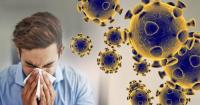CORONAVIRUS: A reminder of Hygiene Rules by the Lifesaving Society
PRESS RELEASE
For immediate release
CORONAVIRUS: A reminder of Hygiene Rules by the Lifesaving Society
Montreal, March 12, 2020 – Although the international public health has called the coronavirus (COVID-19) outbreak pandemic, Quebec and the rest of Canada still count few confirmed cases for the moment and the risk of contagion is relatively low. Current epidemiological evidence indicates that person-to-person transmission of COVID-19 seems to be done mostly through contact with respiratory droplets of an infected person. Since infected particles can be found in feces as well, a fecal-oral transmission of coronavirus is also possible1.
The Lifesaving Society understands that some public pool patrons can have a concern about the COVID-19 transmission in aquatic centres. The Lifesaving Society would like to reassure the population about the risk of transmission in these aquatic environments. Even if the coronaviruses can potentially be found in these waters due to feces and respiratory secretion, they are generally quite sensitive to chlorine.2 In order to destroy them, it is important to maintain water quality standards concerning chlorine concentration and pH by following regulatory requirements. Similarly, it is crucial to strictly follow requirements regarding events of vomitus or feces presence specified in section 5 of the Regulation respecting water quality in swimming pools and other artificial pools in order to limit the spread of viruses or other communicable diseases and to better protect bathers.
Hygiene standards that already exist and that are applied in aquatic facilities, whether it is in the context of visiting or of operating, stay the same and for now no particular measure needs to be taken regarding COVID-19. The Lifesaving Society would still like to remind you of its hygiene requirements to limit the transmission of any diseases in aquatic facilities:
- Wash your hand frequently using water and soap for at least 20 seconds, especially after going to the bathroom and before handling food (use a 60% alcohol-based hand sanitizer if you do not have access to soap and water);
- When you cough or sneeze, cover your mouth and nose with a tissue or your bent elbow, rather than your hand, immediately dispose of the used tissue in garbage with a plastic bag and then wash your hands;
- Avoid touching eyes, nose and mouth without having previously washed your hands;
- Regularly wash surfaces that are frequently touched (toilets, phones, reception desk, credit and debit card terminals, door handles, lockers, turnstiles, etc.) with a regular household cleaner or a mild bleach solution (one part of household bleach for nine parts of water);
- Clean regularly your electronic devices such as computers, keyboards and mice, pads and especially your cellphones. Follow the manufacturer’s directions to avoid any damage.
The Lifesaving Society would also like to remind basic hygiene rules in the context of resuscitation training courses because they help reduce the risk of contracting or passing an infection. Although the COVID-19 crisis requires a great rigour in the cleaning of training courses equipment, the basic cleaning procedure stays the same. Manikins used during resuscitation training courses (CPR) must be carefully cleaned and disinfected immediately after courses, and this is true at all times.
When practising resuscitation skills and CPR using a manikin:
- Do not chew gum or eat;
- Do not participate in ventilation if you have a respiratory infection (cold, flu, coronavirus, etc.), or if you have open sores on your hands or mouth;
- Do not wear lipstick;
- Wash your hands before and after working on manikins.
If you share a manikin with someone else during the training, these steps are necessary:
- Dry the face of the manikin with a gauze pad;
- Wipe the face of the manikin with a disinfecting solution and scrub even inside the manikin’s mouth;
- Allow the solution to work for 30 seconds before passing the manikin to the other person.
All Lifesaving Society’s instructors must also make sure that candidates participating to a course or a recertification have access to pocket masks or any other approved protection barrier3, that they are trained to use them and that they actually use them. Protection barriers (pocket masks, and gloves) must be used at all times when artificial breathing, cardiopulmonary resuscitation and clearing airway techniques are practised or executed. One of the Lifesaving Society priorities is to make sure that candidates master the use of protection barriers to be ready for real-life situations.
The Lifesaving Society closely monitors the spread of the COVID-19 to ensure the safety of its members, and of aquatic facilities staff and patrons. New recommendations might be released later depending on the spread of the virus in Quebec and on the public health evidences.
- 30 -
- https://www.inspq.qc.ca/sites/default/files/documents/maladies-infectieuses/2020-02-28_covid-19_fiche_tableau_clinique_inspq.pdf
- https://www.waterra.com.au/_r9550/media/system/attrib/file/2200/WaterRA_FS_Coronavirus_V11.pdf
- https://www.sauvetage.qc.ca/sites/default/files/img_site/PolitiqueBarrieresDeProtection_FR_FINAL.pdf
Contact: Anne-Marie Francoeur
Communication & Public Relation Lead
Lifesaving Society
Telephone: 514-252-3100, ext. 3737 or 1-800-265-3093
Email: amfrancoeur@sauvetage.qc.ca






